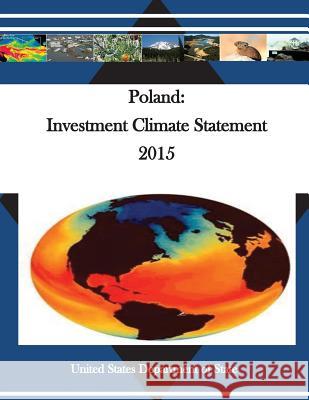Poland: Investment Climate Statement 2015 » książka
Poland: Investment Climate Statement 2015
ISBN-13: 9781530701377 / Angielski / Miękka / 2016 / 24 str.
Poland: Investment Climate Statement 2015
ISBN-13: 9781530701377 / Angielski / Miękka / 2016 / 24 str.
(netto: 56,57 VAT: 5%)
Najniższa cena z 30 dni: 55,53 zł
ok. 13-18 dni roboczych
Dostawa przed świętami

Darmowa dostawa!
In the twenty-six years since Poland discarded communism and the eleven years since it joined the European Union (EU), Poland's investment climate has improved steadily and is highly conducive to U.S. investment. Since 2007, Poland's economy has grown by almost 24 percent compared with the EU average growth at 0.6 percent. In 2014, Poland was an EU leader in consumption and investment growth. Poland outperformed other EU member states throughout the global economic crisis. Poland's strong prospects for future growth will likely continue to attract new investors seeking access not just to its dynamic local market of over 38 million people, but also to the broader EU market of nearly 500 million. Foreign investors also cite Poland's young, well-educated, and relatively low-cost work force as a major reason to invest. Other factors making Poland an attractive investment destination are its proximity to major markets and its political stability. The volume of U.S. investment in Poland amounts to around USD 20 billion, taking into account the amounts routed through U.S. subsidiaries in other countries. That makes the United States one of the largest foreign investors in Poland. Poland has worked to establish a solid legal foundation and tax regime conducive to investment. The government continues to focus on streamlining regulation and bureaucratic processes to make doing business easier. However, U.S. investors express increased concern over regulatory, legal and investment environment uncertainty, particularly in the energy sector. Poland is in the process of consolidating its overall energy policy. Foreign investors are increasingly skeptical of interactions with state owned or affiliated energy enterprises as well. The government seeks to expand the economy by encouraging entrepreneurship and innovation through the use of domestic and European Union funding (EU Structural and Cohesion funds, as well as EU Horizon 2020 program funds) to support scientific research, technological development, and innovation. There are growing opportunities for foreign direct investment (FDI) in a number of Polish sectors. In services, business process outsourcing of accounting, legal, and information technology services, as well as research and development, is Poland's fastest-growing sector, and will continue to attract FDI. The defense industry is another promising sector, as Poland prepares to spend up to USD 45 billion through 2022 on military modernization, and will look for domestic production and technology transfer opportunities in awarding tenders. There are also opportunities for FDI in the energy sector (nuclear, renewables and natural gas) as Poland seeks to diversify its energy mix, and in information infrastructure as Poland implements its plan to connect all Polish households to the internet by 2020. Other issues for investors to watch besides energy sector consolidation include developments in neighboring Ukraine. Further turmoil in Ukraine and disruptions in trade relations with Russia could reduce Poland's GDP growth for 2015 (projected at approximately 3.4 percent) by about 0.1-0.2 of a percentage point. To mitigate the impact of the Ukrainian crisis, Polish companies have diversified their export markets and taking advantage of rising domestic demand to expand sales in Poland. They are likely to continue foreign and domestic expansion in 2015.











